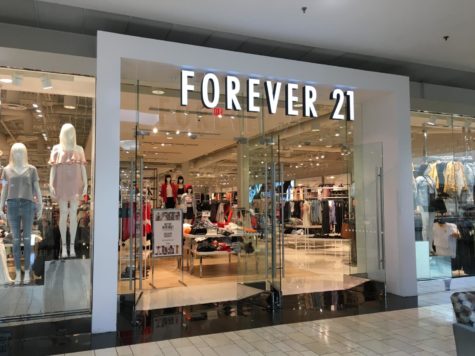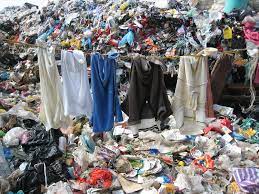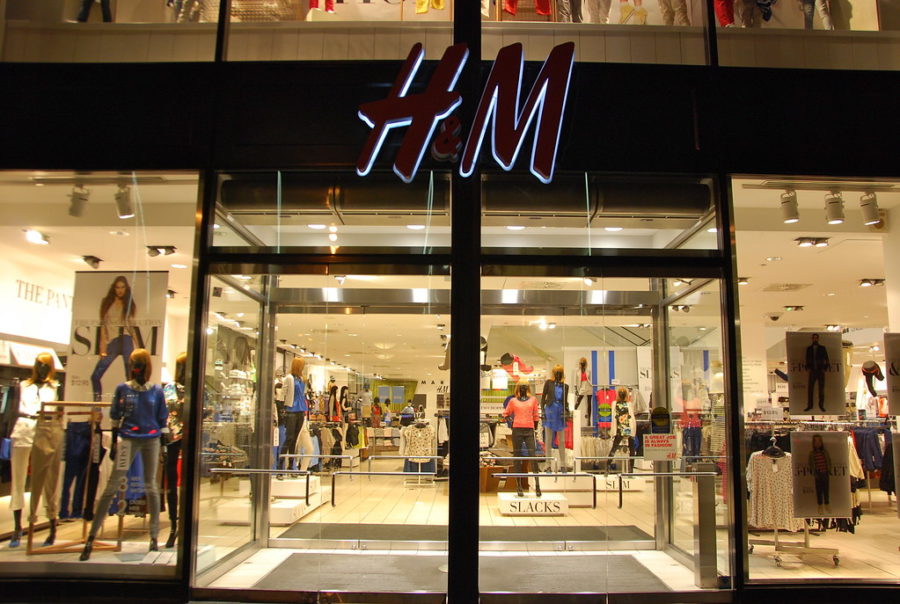Destroying the Planet One Piece of Clothing at a Time
H&M Shopping / Flickr / CC BY-NC-SA 2.0
Another fast fashion giant is H&M, infamous for burning over 12 tonnes of clothing per year. Most clothing companies prefer burning clothing over donating it because of 2 reasons. First, it barely costs them a thing and second, it lets them save money.
Imagine buying a top from a fast fashion company. Now, imagine where that top will be after a few months or years. Most clothing either gets thrown away or damaged, and it is drastically affecting our planet. Over fifty billion garments are being thrown away within a year of being made. Fast fashion can be described as inexpensive clothing produced by a mass-market retailer in response to the latest trends occurring at the moment. In today’s world, people have been subjected to ordering packages from companies such as Wish, Shein, and H&M along with many others. These companies are well known for their fast fashion clothing. This trend began in the 1990s and early 2000s, exposing our planet to various plastic and waste products.
According to “Why is Fast Fashion and Why is it so Bad?” these businesses are well-known for selling their products at a fraction of the price customers would pay elsewhere. This is how many customers can update their wardrobes quickly but at low quality.

“I believe that fast fashion has taken over today’s fashion industry,” senior Faith Anderson said. “It has caused a huge amount of waste that wasn’t nearly as prominent in the fashion industry as it is today. It has a huge effect on the world, and a lot more clothes are being thrown away instead of used and reused. Along with so much waste and pollution of the Earth.”
With the amount of waste that is harming the planet, many have turned towards buying second-hand clothes and thrifting.
“I think fast fashion is a bad thing because it’s giving people the idea that buying clothes all the time for cheap is better than buying nicer clothes and wearing them for a long time,” senior Kyra Leffert said. “I personally love buying clothes second-hand. It’s so much better for the environment and you can find better clothes with better quality at a thrift store instead of buying a $3 shirt with terrible quality.”
Fast fashion is putting the planet in danger by exploiting workers and harming animals.
“Little kids and immigrants are being forced into working for these fast fashion companies,” Leffert said. “They are forcing children to work countless hours and making countless amounts of clothes. Immigrants are also included in these awful tasks. I think it’s terrible and sad nobody, especially children, and immigrants should be forced to work for terrible companies.”

Many immigrants from Asian developing countries who work for large corporations like Shein are forced to work long hours in hazardous conditions, are paid less than the legal minimum wage, and do not have access to healthcare or paid leave.
“I do know that most fast fashion companies pay their workers the bare minimum,” Anderson said. “A lot of these companies are in countries that do not have child labor laws, and I know that most immigrants and children will work for a small amount of money because it may be the easiest or only option that they have. I believe that it is wrong to work with children and immigrants and pay them as little as possible, knowing that fast fashion companies make a large amount of money.”
Many unfortunate people do not have access to clothing. As a result, students believe that these items of clothing can do more good than harm.
“I believe there are many people in need of clothing,” senior Yazetl Dominguez Lopez said. “People who are unable to shower or change their clothes could put these clothes to use instead of throwing them away. Instead of polluting the environment, it helps to recycle and reuse. That way those in need can make use of them.”
By 2026, fast fashion is projected to grow to $133.43 billion. With the planet being in danger, the world of fast fashion isn’t planning to end anytime soon.
“I think when people ask about what can be done to fix the negative repercussions of fast fashion, we think what we as individuals can do,” college student Abigail Moore said. “Yes, we the people are why these companies are growing because companies only do well if we purchase their items. Without customers, there is no business. So for a short and easy way to help, we could stop giving our money to these harmful brands. But, I do not think this is the solution. The root is not us, but America’s major need for consumption and its harmful methods of doing so. Capitalism is now heading in the direction where big businesses do not care about ethics or quality. It’s all about making easy money even though it jeopardizes the environment or well-being of others.”
Your donation will support the student journalists of Logansport High School. Your contribution will allow us to purchase equipment and cover our annual website hosting costs.

Emily Sanchez is a senior this year and has been involved in Magpie since her freshmen year in 2020. She currently serves as co-Managing Editor and enjoys...










